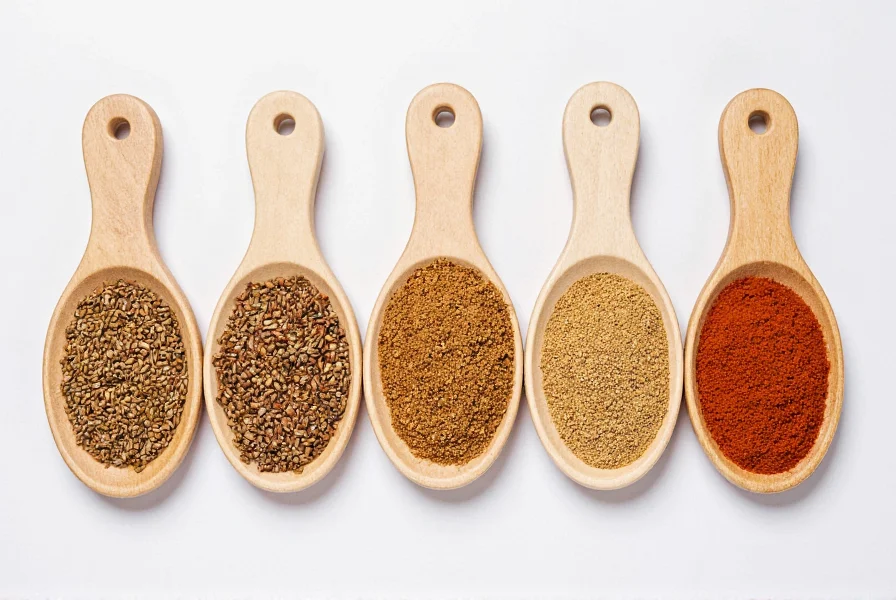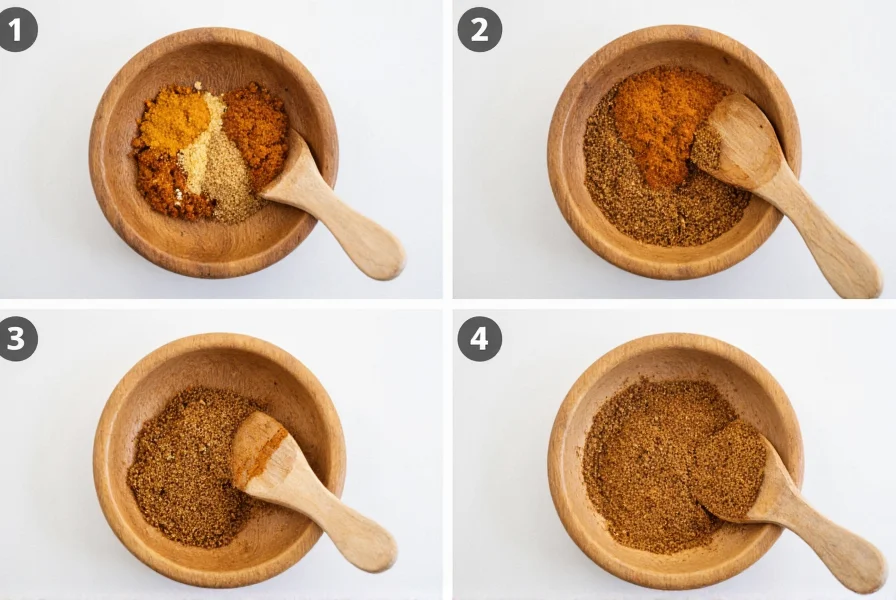The best cumin seeds substitutes are ground cumin (use 1 teaspoon ground for 1 tablespoon seeds), chili powder (1:1 ratio for Mexican dishes), coriander seeds (½ ratio with added paprika), and caraway seeds (⅔ ratio with lemon zest). Each alternative offers distinct flavor profiles that work best in specific cuisines—ground cumin provides the closest match while custom blends can replicate complex notes when cumin is unavailable.
Running out of cumin seeds mid-recipe doesn't have to ruin your cooking. As a professional chef with two decades of spice expertise, I've tested dozens of cumin alternatives across global cuisines to determine which substitutes actually work—and which ones create flavor disasters. This guide delivers practical, kitchen-tested solutions that maintain dish integrity when cumin seeds aren't available.
Why Cumin Seeds Are Unique
Cumin seeds (Cuminum cyminum) deliver a distinctive earthy, warm, slightly citrusy flavor with subtle bitterness that's fundamental to many global cuisines. Their essential oil composition—particularly cuminaldehyde—creates a flavor profile difficult to replicate exactly. Whole seeds provide more nuanced flavor than ground cumin due to slower oil release during cooking, making substitution more complex than a simple 1:1 swap.
Top 7 Cumin Seed Substitutes Ranked
| Substitute | Flavor Comparison | Substitution Ratio | Best For | Limitations |
|---|---|---|---|---|
| Ground cumin | Stronger, more intense | 1 tsp ground = 1 tbsp seeds | All applications | Lacks seed texture; burns faster |
| Chili powder blend | Milder, with garlic/onion notes | 1:1 ratio | Tacos, chili, fajitas | Additional spices alter flavor profile |
| Coriander seeds + paprika | Citrusy, less earthy | ½ coriander + ¼ paprika = 1 cumin | Middle Eastern dishes | Lacks depth of true cumin |
| Caraway seeds | More anise-like, similar earthiness | ⅔ caraway + lemon zest = 1 cumin | Central European recipes | Distinct licorice note changes profile |
| Garam masala | Warmer, more complex | ¾ garam masala = 1 cumin | Indian curries | Contains multiple spices beyond cumin |
| Taco seasoning | Brighter, with oregano notes | ⅔ taco seasoning = 1 cumin | Mexican dishes | High salt content requires adjustment |
| Cumin powder + oil | Nearly identical | 1 tsp powder + ¼ tsp oil = 1 tbsp seeds | All applications | Requires toasting for best results |
Cuisine-Specific Substitution Strategies
Understanding regional spice blends helps create authentic substitutions. For Mexican recipes, chili powder works best as it typically contains 25-30% cumin plus complementary spices like garlic powder and oregano. In Indian cooking, garam masala provides better results than individual substitutes since it already contains cumin along with balancing spices like cardamom and cloves.
Middle Eastern dishes benefit from a custom blend of equal parts coriander seeds, paprika, and a pinch of turmeric. The coriander provides citrus notes while paprika adds earthiness without overwhelming the dish. For Mediterranean recipes, caraway seeds with lemon zest most closely mimics cumin's profile, though the anise notes require careful balancing.

When Substitutions Won't Work
Some dishes rely so heavily on cumin's unique chemistry that substitutions fundamentally alter the dish. Authentic dhania jeera (coriander-cumin powder) in Indian cuisine, Yemeni hawaij spice blends, and traditional Moroccan ras el hanout require actual cumin for proper flavor development. In these cases, consider modifying the entire recipe rather than forcing a substitution.
Creating Your Own Cumin Substitute Blend
For the most versatile alternative, combine:
- 2 parts ground coriander
- 1 part smoked paprika
- ½ part dried oregano
- ¼ part garlic powder
- Pinch of cayenne (optional)
Store in an airtight container for up to 3 months. Use ¾ teaspoon of this blend to replace 1 tablespoon of cumin seeds. Toast the blend in dry pan for 30 seconds before use to activate flavors—this crucial step mimics the essential oil release of whole cumin seeds.

Professional Chef Tips
Always toast whole seed substitutes like caraway or coriander before use to maximize flavor extraction. For liquid-based dishes like soups and stews, add substitutes early in cooking to allow flavors to meld. In dry rubs or finishing applications, add substitutes later to preserve volatile flavor compounds. Remember that seed substitutes generally require 25% less quantity than ground versions due to concentrated flavor.











 浙公网安备
33010002000092号
浙公网安备
33010002000092号 浙B2-20120091-4
浙B2-20120091-4